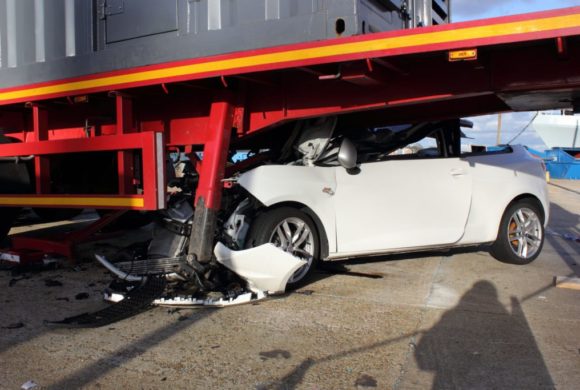Recent studies reveal that many of the serious, life changing and even deadly injuries every year caused by underride crashes can be minimized or prevented completely with the use of a new safety device. The product, known as AngelWing, is a side underride guard that is specifically designed to prevent passengers in smaller vehicles from suffering serious injuries or death in the event of a side collision with a large truck.
According to recent statistics, more than 200 victims are killed and even more are seriously injured by underride accidents in the United States every year. While federal law requires semi trucks to have rear underride guards in place, side guards are not currently required. And despite reports by the National Traffic Safety Board (NTSB) that conclude that side guards would reduce the risk of injury and death on America’s roadways, and their recommendation to the National Highway Traffic Safety Association (NTHSA) that all new truck trailers be equipped with side underride protection, the Truck Trailer Manufacturers Association continues to oppose such a requirement. The industry’s lobbying arm cites the additional costs, various technical challenges, and the concern that these side guards could add significant weight to a trailer or dangerously weaken its parts.
An Effective Solution for Semi Truck Underride Crashes
Approximately 62 percent of a large truck trailer’s length is protected when side underride guards are in place. Without these guards, only about 15 feet are protected. And while many semi trucks are currently equipped with composite side fairings, they are not designed to withstand the impact of a crash.
A recent study by the Insurance Institute of Highway Safety (IIHS) evaluated the effectiveness of AngelWing guards in 35 mph. side collisions versus side fairing skirts that were designed to enhance aerodynamics only. The results were dramatic, with the AngelWing guards preventing the smaller test vehicles from moving underneath the large truck, and the composite side fairings allowing the cars to slide under the trailer. When the car passed under the truck trailer, part of the roof of the smaller vehicle was sheared off and the car became wedged beneath the truck. If the simulations had included moving vehicles, those without AngelWing protection could have resulted in overturned trailers or the vehicle coming into contact with the rear axles. In real life, this type of crash would likely have caused severe, disabling injuries or fatalities.

